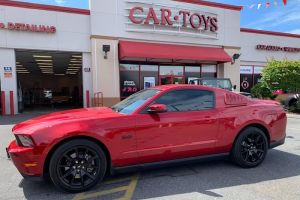How to Install macOS Using a Bootable USB Drive: A Step-by-Step Guide
- Why Use a Bootable USB Drive for macOS Installation?
- Requirements for Installing macOS Using a Bootable USB Drive
- How to Create a Bootable USB Drive for macOS
- Steps to Install macOS Using the Bootable USB Drive
- Troubleshooting Tips for macOS Installation
- Where to Buy Bootable USB Drives for macOS Installation
Why Use a Bootable USB Drive for macOS Installation?
Installing macOS using a bootable USB drive is a great way to ensure a clean, efficient installation process. Whether you're upgrading to the latest macOS version, reinstalling the system, or troubleshooting system issues, using a bootable USB drive offers a reliable, fast solution. This method bypasses the need for internet-based recovery or relying on external hard drives, giving you complete control over your installation.
In addition, a bootable USB drive can be a lifesaver in situations where your Mac is not booting correctly, allowing you to access system utilities and perform repairs or fresh installations without needing to rely on other devices.
Requirements for Installing macOS Using a Bootable USB Drive
1. A Mac Computer
Of course, to install macOS, you will need a Mac computer. Ensure your Mac is compatible with the version of macOS you want to install. You can check Apple’s official website for compatibility information based on your Mac model.

Best Buy
4210 Centerplace Dr, Greeley, CO 80634, USA
2. A USB Drive (at Least 16GB)
You'll need a USB drive with at least 16GB of storage. This drive will be formatted, so make sure you back up any important data before proceeding.

Car Toys
2859 35th Ave, Greeley, CO 80634, USA
3. macOS Installer
You’ll need to download the macOS installer from the Mac App Store. Make sure you download the correct version that is compatible with your Mac. The installer is free, and it will allow you to create the bootable drive.
4. A Reliable Internet Connection
A stable internet connection is required to download the macOS installer and potentially any updates or additional files needed during the installation process.
How to Create a Bootable USB Drive for macOS
1. Format the USB Drive
First, you need to format your USB drive using Disk Utility. Open Disk Utility, select your USB drive, and click on “Erase.” Choose “Mac OS Extended (Journaled)” as the format and “GUID Partition Map” as the scheme. This ensures the USB drive is ready for macOS installation.
2. Download the macOS Installer
Go to the Mac App Store and search for the macOS version you want to install. Click "Get" and wait for the download to finish. Once it’s done, the installer will open automatically—make sure to close it before proceeding.
3. Create the Bootable USB Drive
Next, you’ll need to use Terminal to create the bootable USB. Open Terminal and use the following command, replacing “Untitled” with the name of your USB drive:
sudo /Applications/Install macOS [version].app/Contents/Resources/createinstallmedia --volume /Volumes/Untitled --nointeraction
Press Enter and wait for the process to complete. The terminal will indicate when the drive is ready to use.
Steps to Install macOS Using the Bootable USB Drive
1. Boot from the USB Drive
Once you have created the bootable USB drive, restart your Mac while holding down the Option key. This will bring up the startup manager. Select your USB drive from the list of bootable options and press Enter.
2. Install macOS
The macOS installer will launch. Follow the on-screen instructions to proceed with the installation. Choose the hard drive or partition where you want to install macOS. If you’re performing a clean install, select the drive and click “Erase” before continuing.
3. Complete the Installation
Let the installation process complete, which can take some time. Once it’s finished, your Mac will restart. Follow the setup prompts to finalize your macOS setup, including choosing your region, signing into your Apple ID, and restoring from backups if necessary.
Troubleshooting Tips for macOS Installation
1. USB Drive Not Showing Up
If your USB drive does not show up in the startup manager, make sure it’s properly formatted and contains the macOS installer. Recheck the steps to ensure you didn’t miss anything during the setup of the bootable USB.
2. Installation Freezes or Fails
If your macOS installation freezes or fails, restart your Mac and boot into macOS recovery mode by holding Command + R during startup. Use Disk Utility to check for disk errors or try reinstalling macOS using the bootable USB drive again.
Where to Buy Bootable USB Drives for macOS Installation
If you prefer not to create a bootable USB drive yourself, you can purchase a pre-made bootable USB drive from trusted sources like [Ninja Stik](https://www.ninjastik.com). They offer reliable and secure USB drives that are ready for macOS installation, making the process simple and stress-free for those who need a quick solution.
Click here to check out Ninja Stik’s selection of bootable USB drives and get started with your macOS installation today!





























